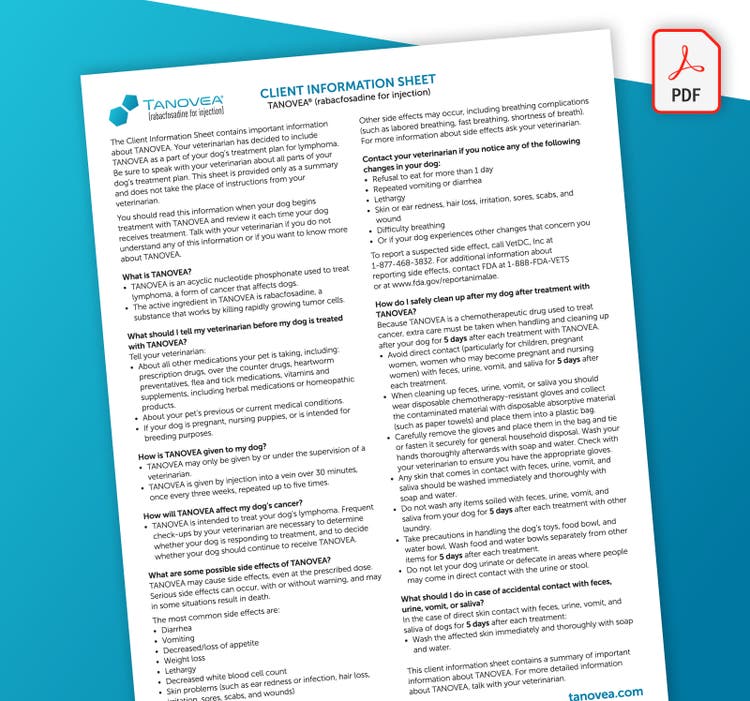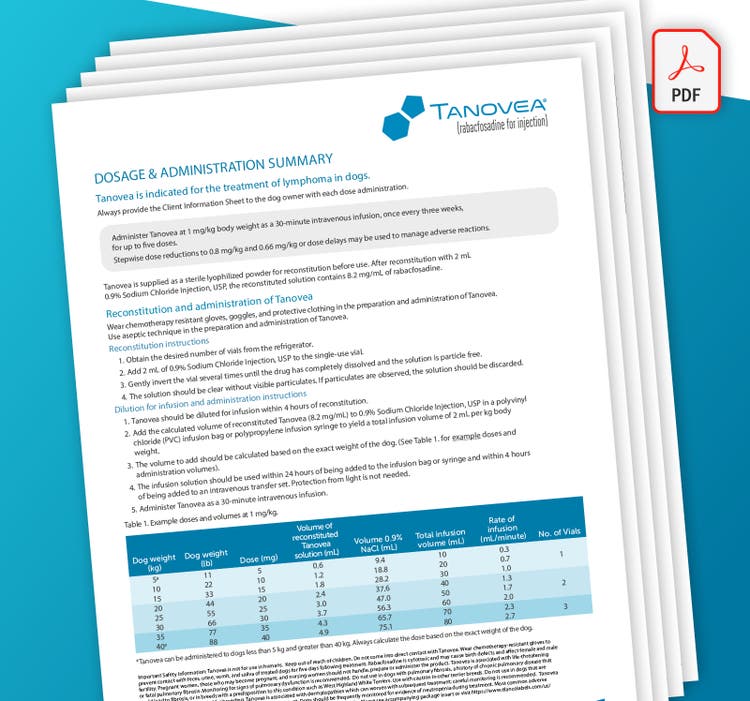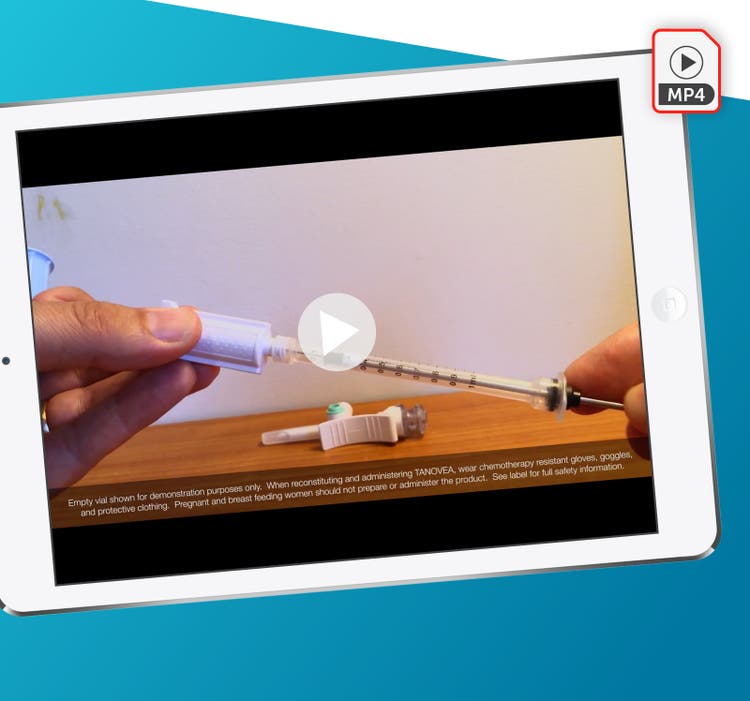
Hundreds of reasons to treat lymphoma again
Hundreds of reasons to treat lymphoma again
Tanovea® (rabacfosadine for injection) is now the first and only FDA fully approved treatment for canine lymphoma, offering renewed confidence for a different approach at first rescue.
That adds up to a lot of balls still to fetch!
Tanovea® (rabacfosadine for injection) is proven effective in canine lymphoma and offers:
A novel mechanism of action (MOA) designed to target lymphoma¹
73% Overall Response Rate (ORR)*
151 days median progression-free survival (PFS) in responding dogs*
Convenient
3-week treatment intervals
Choose a different option for treating lymphoma with Tanovea
Tanovea Mechanism of Action (MOA) Video

Tanovea’s MOA is different from commonly used agents in canine lymphoma1-4

Tanovea preferentially targets cancerous lymphoid cells, where it is converted to its active metabolite1

It inhibits DNA polymerases α, δ, and ε, which results in DNA synthesis arrest and induction of programmed cell death1

As a double prodrug with an affinity for neoplastic lymphoid tissue, this limits its off-target toxicity.1

A non-overlapping MOA has the potential to overcome emergence of treatment resistance1
Tanovea has been clinically proven to be effective at first rescue†
In a subgroup of 30 dogs with relapsed B-cell lymphoma who had received one prior chemotherapy regimen, Tanovea demonstrated:†

Tanovea is a generally well-tolerated treatment for canine lymphoma

Most of the adverse events (AEs) associated with Tanovea were Veterinary Cooperative Oncology Group (VCOG) grade 1 or 2

AEs can be managed with dose delays or stepwise dose reductions

AEs associated with Tanovea included diarrhea, hyporexia, weight loss, vomiting, lethargy and neutropenia

Dermatologic changes such as otitis, alopecia, dermatitis, erythema, pruritus, and hyperpigmentation have also been observed
Tanovea® (rabacfosadine for injection) Resources
*In the pivotal, placebo-controlled, masked study, 158 dogs were randomized 3:1 to receive Tanovea or placebo. Treatment was given once every 3 weeks via 30-minute intravenous (IV) infusions, for up to 5 treatments. 120 dogs received 1mg/kg Tanovea and 38 dogs received placebo (saline). Of the 158 dogs, 148 were assessed for treatment response. In the Tanovea group, of the 112 dogs assessed for effectiveness, 53 were treatment-naïve and 59 had failed previous therapy.
†In the pivotal study of 158 dogs, 120 dogs received Tanovea at a dose of 1.0 mg/kg as a 30-minute IV infusion every 21 days for up to five treatments. Of the actively treated dogs 112 were assessed for treatment response, 30 of which had relapsed B-cell lymphoma with 1 prior chemotherapy regimen.
INDICATION: Tanovea is indicated for the treatment of lymphoma in dogs.
IMPORTANT SAFETY INFORMATION: Tanovea is not for use in humans. Keep out of reach of children. Do not come into direct contact with Tanovea. Wear chemotherapy-resistant gloves to prevent contact with feces, urine, vomit, and saliva of treated dogs for five days following treatment. Rabacfosadine is cytotoxic and may cause birth defects and affect female and male fertility. Pregnant women, those who may become pregnant, and nursing women should not handle, prepare or administer the product. Tanovea is associated with life-threatening or fatal pulmonary fibrosis. Monitoring for signs of pulmonary dysfunction is recommended. Do not use in dogs with pulmonary fibrosis, a history of chronic pulmonary disease that could lead to fibrosis, or in breeds with a predisposition to this condition such as West Highland White Terriers. Use with caution in other terrier breeds. Do not use in dogs that are pregnant, lactating, or intended for breeding. Tanovea is associated with dermatopathies which can worsen with subsequent treatment; careful monitoring is recommended. Tanovea can cause neutropenia with nadir around seven days post-treatment. Dogs should be frequently monitored for evidence of neutropenia during treatment. Most common adverse reactions included diarrhea, decreased appetite, emesis, lethargy, weight loss and neutropenia.
Please see Tanovea product label for full Prescribing Information.







